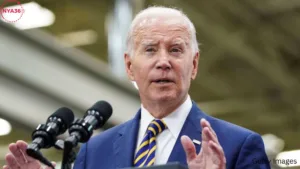Due to the engagement of Iran proxies war, the disclosure of a possible US endgame, and the expectation of rising war spending, the Middle East scenario is growing more complicated. Below is a synopsis of the major developments:
1. The Role of Iran Proxy: The growing engagement of Iranian proxies in the Middle East conflict is one of the major developments. Iran is well-known for providing financial assistance to a number of armed organizations operating in the area, some of whom are directly involved in the current fighting. Their participation might worsen the situation and possibly involve more people from the region in the fight.
2. US Endgame: Regarding its involvement in the Middle East war, the United States has been under pressure from a number of sources. There are hints that the US might be looking for an exit plan, even though the exact conclusion is still unknown. The US is reassessing its strategy for the fight in light of the involvement of Iranian proxies and other regional parties, which has exacerbated the situation.
3. War Spending: As hostilities in the Middle East worsen, worries are growing about the associated financial outlays. President Biden has asked Congress to set aside a large portion of money for military expenditures, mostly to aid nations like Taiwan, Israel, and the Ukraine. The huge budget request is making some wonder what the long-term financial and economic effects of continuing the war effort will be.
The stability of the region is called into question by Iran’s proxies’ engagement in the Middle East conflict. These proxies, who have strong military capabilities and are supported by Iran, have the ability to escalate the fight. As the conflict develops, it can enlist the help of other nations, growing into a more significant regional problem.
There is still uncertainty about the possible US endgame in the Middle East. There is increasing pressure on the Biden administration to confront the crisis and find a solution from both domestic and foreign sources. There could be major geopolitical repercussions if the US decides to exit or lessen its role in the area.
As the US invests significant financial resources to support its allies and partners in the Middle East, war spending has grown to be a significant worry. President Biden’s substantial budget request is in line with the high expenses of protracted hostilities and the requirement to strengthen the capacities of nations confronting security threats.
Condition in the Middle East’s is unstable, and things are changing quickly. It is unclear how the fight will be affected by Iran’s proxies’ involvement and whether the US will make its endgame obvious. As this is going on, worries about rising military spending remain, with potential consequences for both the US economy and international financial stability. The course of the Middle East conflict and its wider ramifications will be determined in large part by events that occur in the upcoming months.
Interest rates and government expenditures
US Treasury has announced an additional $816 billion for the January to March quarter of 2024, meaning the US government is ready to set new records for borrowing money for war spending. Compared to the previous quarter, they borrowed $40 billion more. The US has a spending addiction that will only get worse. If Biden is granted the funds he is requesting for Israel and Ukraine, the national debt will rise to unimaginable heights.

Additionally, the US Treasury is liquidating its own holdings of treasuries, which it plans to do by the end of Q1 2024. Due to businesses’ inability to obtain loans, rising mortgage rates, and tighter consumer lending, borrowing costs may increase. Knowing the economy can’t bear higher bond yields, Janet Yellen finds herself in a difficult situation.
America’s attempt to finance wars by the issuance of infinite debt is causing the financial markets to erupt into pandemonium right now. Spending on war can go worse: the US has been known to spend at least $8 trillion on military expeditions, primarily in the Middle East. The US has spent at least $8 trillion on military expeditions over the last 21 years, primarily in the Middle East.
The Federal Reserve has declared that, despite the economy being on the verge of collapse, it will not raise rates anymore. Instead, it will maintain rates at current levels. These days, everything is dependent on the Middle East situation and US deficit spending. Because of this bond tsunami and government borrowing, rates are already high. If Iran gets involved, war spending might skyrocket.
Follow us on social media: Instagram, Threads & Twitter X @nya360_ YouTube & Facebook @nya360.





